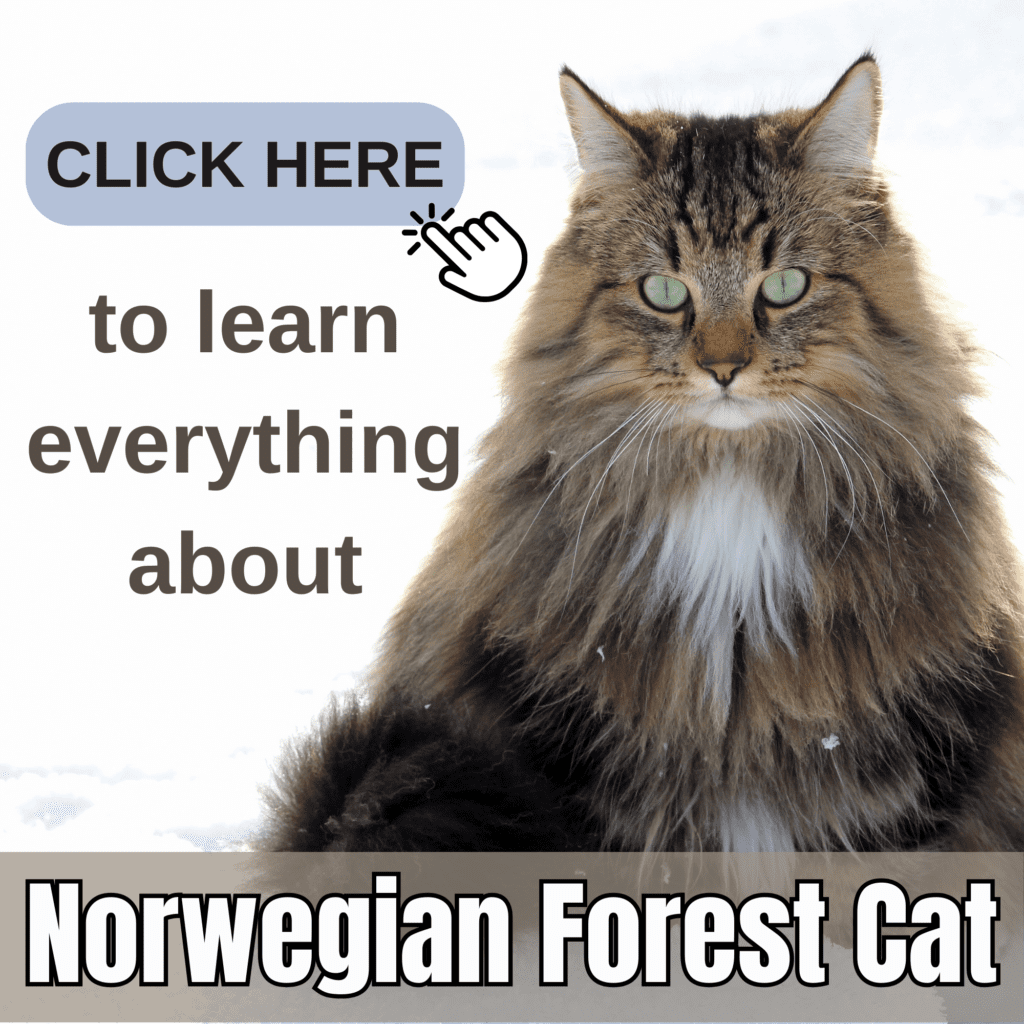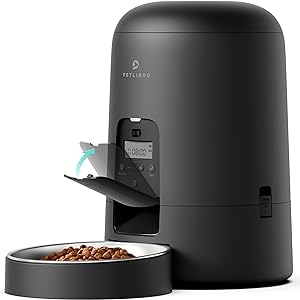How to Provide the Best Nutrition for Norwegian Forest Cats
This post may contain affiliate links, which means I’ll receive a commission if you purchase through my link, at NO EXTRA COST TO YOU
Norwegian Forest Cats are known for their robust health and impressive physical characteristics, which are supported by proper nutrition. Providing your Norwegian Forest Cat with a well-balanced diet is crucial for maintaining their health, energy levels, and overall well-being. Here’s a comprehensive guide to feeding and nutrition for Norwegian Forest Cats.

1. Understanding Nutritional Needs
Balanced Diet: Norwegian Forest Cats require a diet that includes a balance of proteins, fats, and carbohydrates, along with essential vitamins and minerals. Their diet should mimic what they would consume in the wild, focusing on high-quality proteins and fats to support their muscular build and energy levels.
Protein:
- Importance: Protein is essential for muscle development, energy, and overall health.
- Sources: Look for high-quality animal-based proteins like chicken, fish, or beef. These proteins should be listed as the primary ingredient in their food.
Fats:
- Importance: Fats provide energy and support healthy skin and coat.
- Sources: Healthy fats should come from animal sources or fish oils. Omega-3 and Omega-6 fatty acids are particularly beneficial for maintaining a shiny coat and supporting overall health.
Carbohydrates:
- Importance: Carbohydrates provide additional energy and aid in digestion.
- Sources: Opt for easily digestible carbohydrates such as sweet potatoes, peas, or brown rice. Avoid foods with excessive fillers like corn or wheat.
Vitamins and Minerals:
- Importance: Essential for maintaining bone health, immune function, and overall well-being.
- Sources: Ensure the food includes a range of vitamins and minerals, such as vitamins A, D, E, and B-complex, as well as calcium and phosphorus.
YOU CAN ALSO CHECK : Health Issues in Norwegian Forest Cats: What Every Owner Should Know
2. Choosing the Right Food
Commercial Cat Food:
- Dry Food: Dry kibble is convenient and helps to maintain dental health by reducing tartar buildup. Choose high-quality brands with real meat as the first ingredient and minimal fillers.
- Wet Food: Wet food provides additional moisture to your cat’s diet, which is beneficial for hydration. It can also be more palatable for some cats.
Homemade Diet:
- Consult Your Vet: If you prefer to prepare homemade meals for your cat, it’s essential to consult with your veterinarian to ensure the diet is nutritionally complete and balanced.
- Ingredients: Use fresh, high-quality ingredients, and avoid harmful foods such as onions, garlic, and chocolate.
Special Diets:
- For Health Conditions: If your Norwegian Forest Cat has specific health issues (e.g., kidney disease, diabetes), your vet may recommend a special diet to manage their condition.
3. Feeding Guidelines
Portion Control:
- Daily Amount: Follow the feeding guidelines on the cat food packaging or your vet’s recommendations to determine the appropriate portion size. Overfeeding can lead to obesity, while underfeeding can cause nutritional deficiencies.
- Frequency: Most adult cats do well with two meals a day. Kittens and pregnant or nursing cats may require more frequent feedings.
Monitoring Weight:
- Regular Checks: Regularly monitor your cat’s weight and adjust portions as needed. Obesity can lead to various health issues, so maintaining a healthy weight is crucial.
4. Hydration
Importance: Proper hydration is essential for maintaining kidney health and overall well-being. Norwegian Forest Cats, like all cats, need access to fresh, clean water at all times.
Encouraging Water Intake:
- Water Bowls: Provide multiple water bowls in different locations around your home.
- Water Fountains: Consider using a pet water fountain, which can encourage your cat to drink more by providing running water.
- Wet Food: Incorporating wet food into your cat’s diet can help increase their overall water intake.
5. Treats and Supplements
Treats:
- Healthy Options: Choose treats that are low in calories and made from high-quality ingredients. Treats should make up no more than 10% of your cat’s daily caloric intake.
- Training and Bonding: Use treats as rewards for positive behavior and bonding activities.
Supplements:
- Consult Your Vet: Before adding any supplements to your cat’s diet, consult with your veterinarian. Supplements such as fish oil, joint health chews, or probiotics can be beneficial but should be used under professional guidance.
6. Avoiding Harmful Foods
Toxic Foods: Certain human foods are toxic to cats and should be avoided, including:
- Onions and Garlic: Can cause gastrointestinal upset and anemia.
- Chocolate: Contains theobromine, which is toxic to cats.
- Grapes and Raisins: Can cause kidney failure.
- Alcohol and Caffeine: Both are harmful and should never be given to cats.
Conclusion
Providing your Norwegian Forest Cat with a balanced and nutritious diet is essential for their health and well-being. By selecting high-quality commercial cat food or carefully preparing homemade meals, monitoring portion sizes, ensuring adequate hydration, and avoiding harmful foods, you can support your cat’s health and happiness. Regular veterinary checkups will help you adjust their diet as needed and address any specific nutritional needs. With proper feeding and care, your Norwegian Forest Cat will thrive and continue to be a vibrant and beloved member of your family.
© Copyright 2024. All rights reserved.







